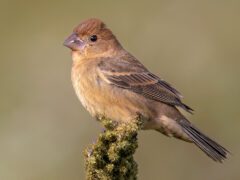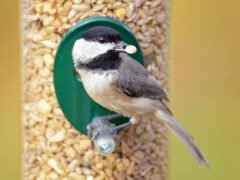The Four Keys to ID
- Size & Shape
The Brewer’s Sparrow is typical of the Spizella group of sparrows: dainty and slim, with a long, notched tail, short rounded wings, and a small, sharply conical bill. Its size varies somewhat by region and sex, but overall it is North America’s smallest sparrow.
Relative Size
About the size of a Black-capped Chickadee; noticeably smaller and slimmer than a Song Sparrow.

 sparrow-sized or smaller
sparrow-sized or smallerMeasurements
- Both Sexes
- Length: 5.1-5.9 in (13-15 cm)
- Weight: 0.4-0.5 oz (11-14 g)
- Wingspan: 7.1-7.9 in (18-20 cm)
© Andrew Spencer / Macaulay Library
- Color Pattern
- Behavior
- Habitat
Regional Differences
Brewer’s Sparrows that live among subalpine trees and shrubs at high elevations in mountains of Alberta, British Columbia, Yukon, Alaska, and some parts of the northwestern U.S., are a separate subspecies (S. b. taverneri, often known as the “Timberline Sparrow”). They differ from birds in the rest of their range in having darker upperparts and bills, with more contrast to the underparts and facial pattern.


















































